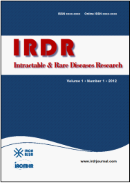Drug Discov Ther. 2015;9(1):45-52. (DOI: 10.5582/ddt.2015.01006)
Enhanced anticancer activity of 5-FU in combination with Bestatin: Evidence in human tumor-derived cell lines and an H22 tumor-bearing mouse.
Li J, Wang XJ, Hou JN, Huang YX, Zhang YJ, Xu WF
The clinical use of 5-fluorouracil (5-FU) is increasingly limited by low response rates, adverse reactions, and toxicity. A drug combination offers a new strategy for appropriate use of 5-FU. Bestatin, an aminopeptidase N (APN) inhibitor, has been used as an adjuvant chemotherapy drug because of its actions to suppress tumorigenesis and invasion. The current study evaluated the anticancer efficacy of 5-FU plus Bestatin at the cellular and animal level. The combination killed more colonic cancer, hepatic carcinoma, and ovarian cancer cells and fewer nonmalignant human embryonic kidney (HEK293) and Chinese hamster ovary (CHO) cells than 5-FU or Bestatin alone. Moreover, 41.58% of ES-2 and 20.86% of PLC/PRF/5 cell apoptosis was caused by the combination of the two, while 5-FU caused apoptosis of 20.86% of ES-2 cells and 8.85% of PLC/PRF/5 cells. The cell cycle was arrested in the S and G0/G1 phases when a combination of the two was used. In an experiment involving mice bearing tumors, a combination of the two had a rate of tumor inhibition of 61.98%, while 5-FU alone had a rate of tumor inhibition of just 49.17%. In addition, the combination of the two was safer than either drug alone and did not cause weight loss or death. In conclusion, combining 5-FU and Bestatin could enhance the anticancer activity of 5-FU and decrease its cytotoxicity. These results suggest that 5-FU plus Bestatin has greater efficacy as a tumor therapy.







